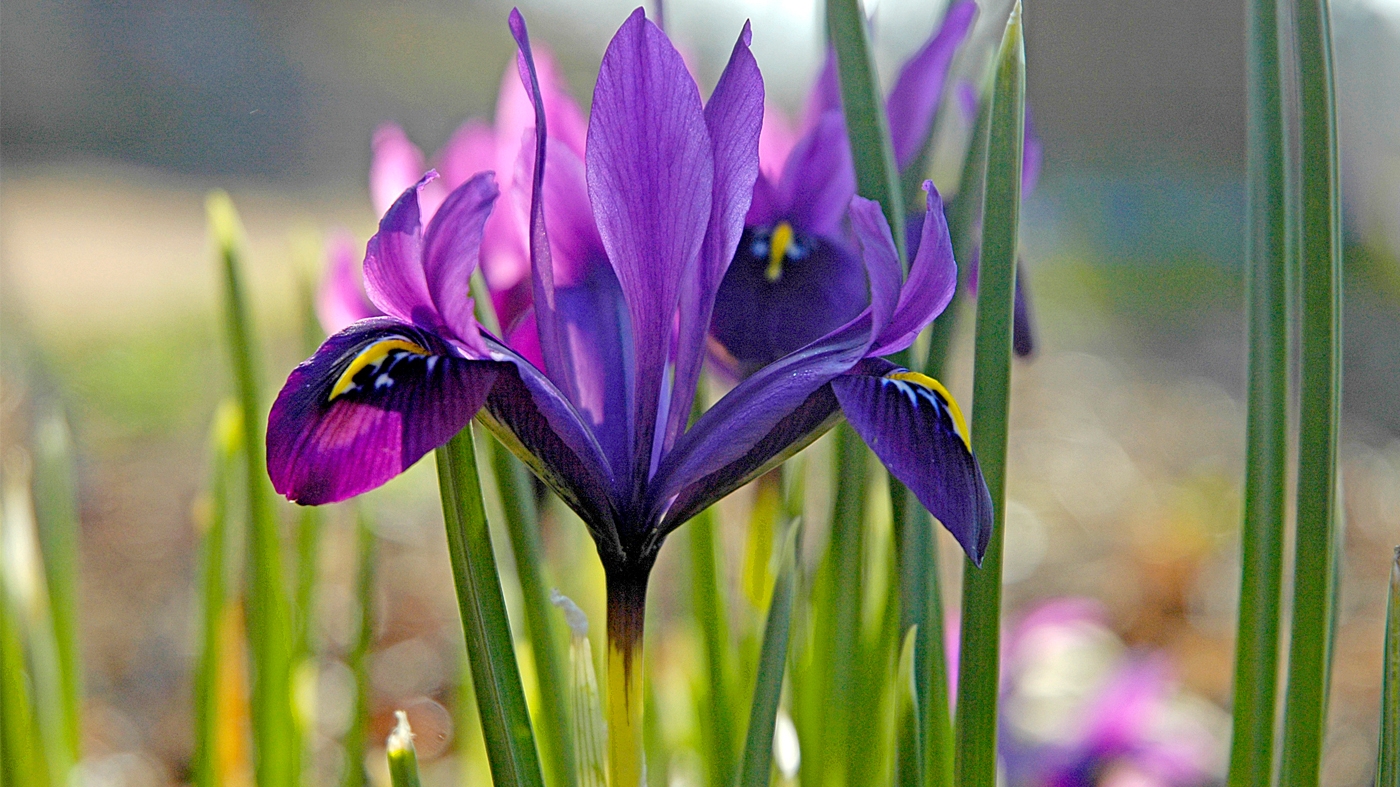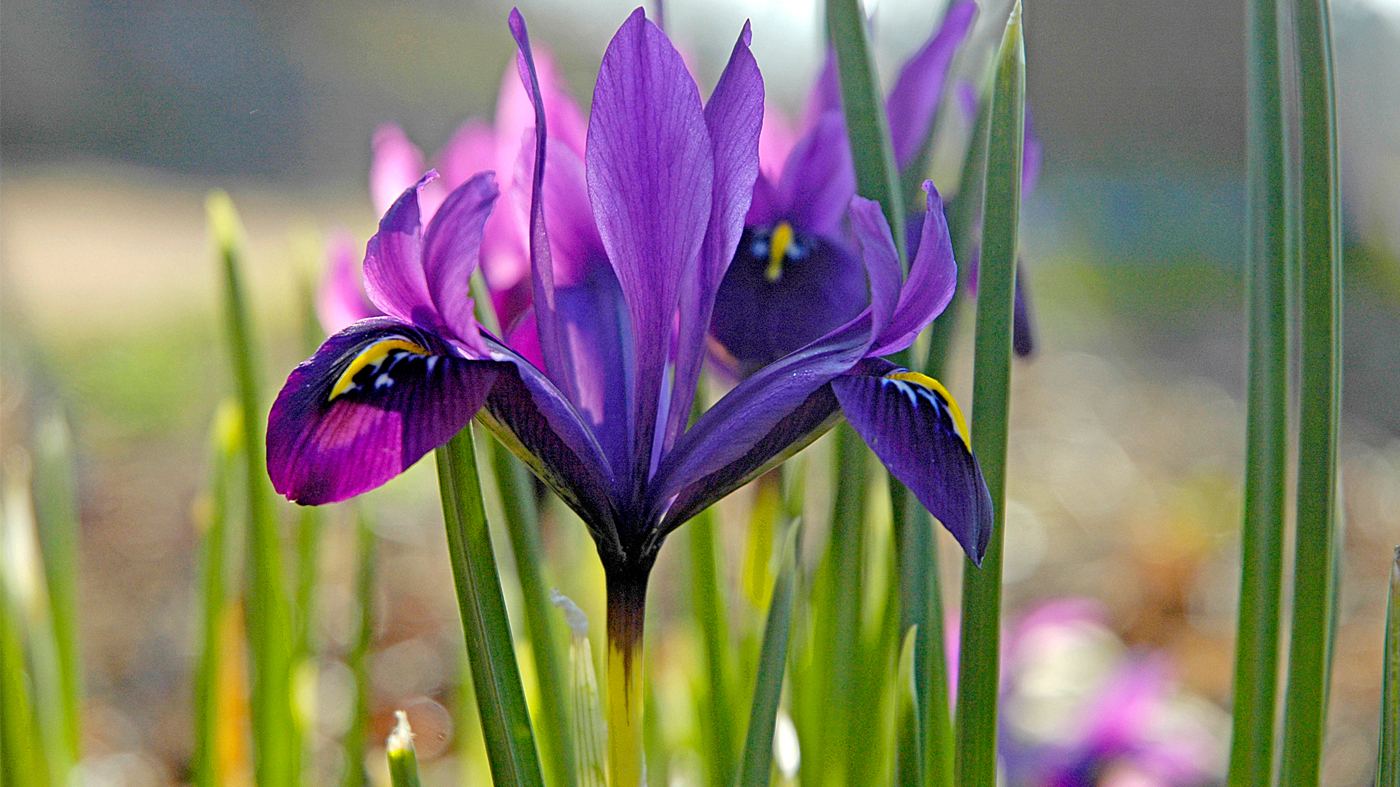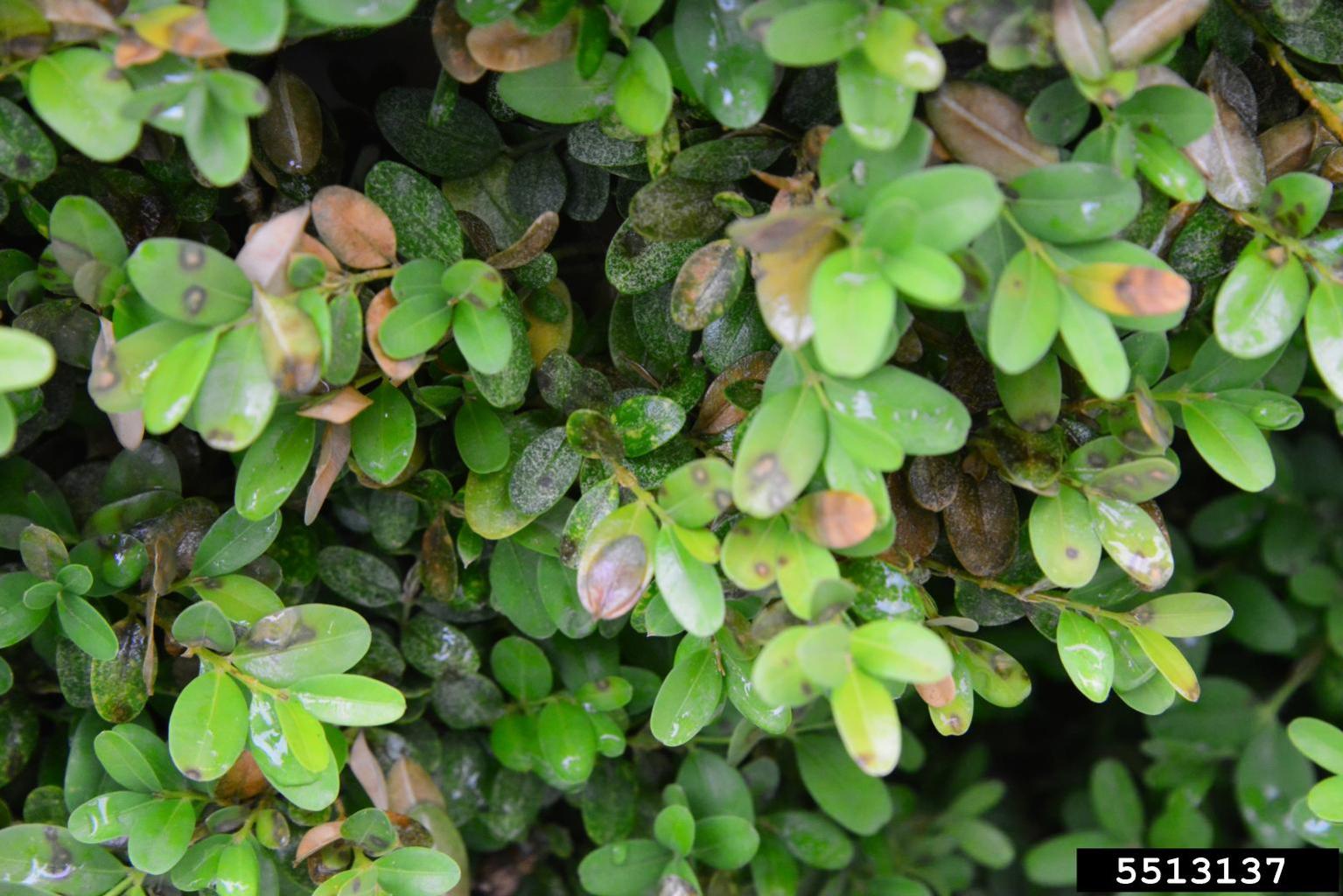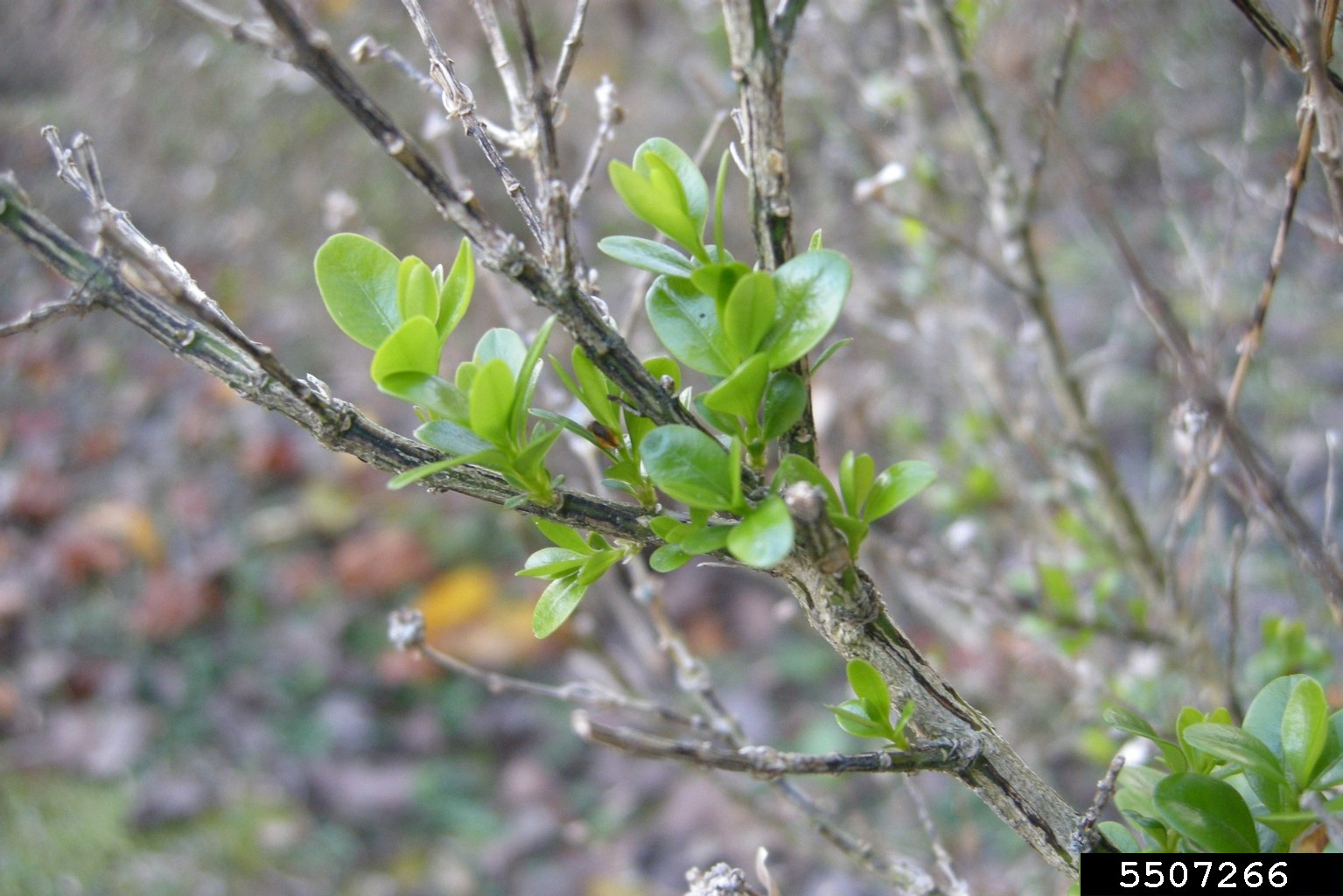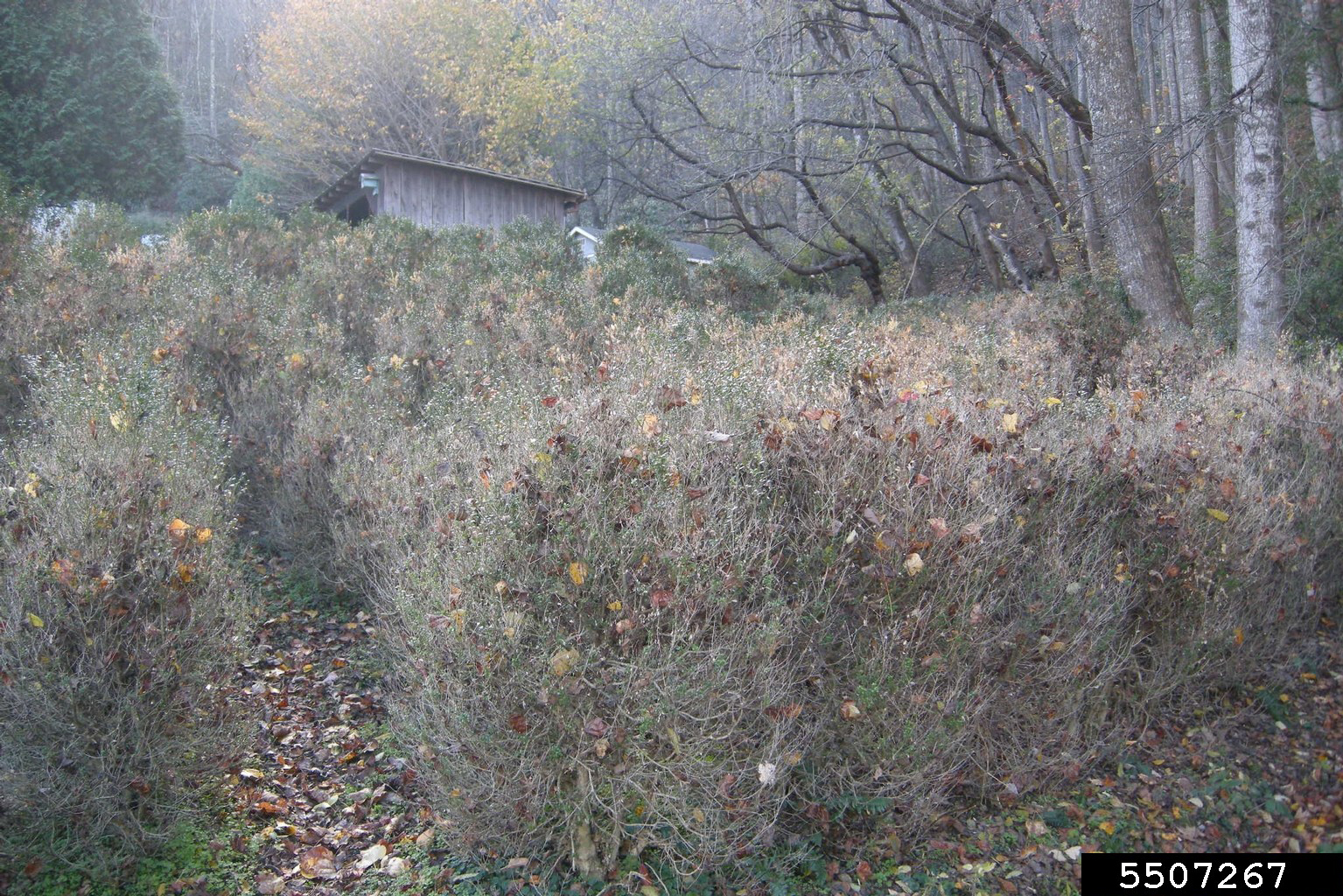Boxwood blight was first discovered in the United States in 2011. Currently, it has been identified in 18 states, primarily in the east. It is being managed at a state level, with various states having different regulations. Some states require nurseries to practice boxwood blight cleanliness programs to ensure the plants they sell are disease free. Here at the Chicago Botanic Garden, we are developing protocol to monitor incoming plants and to monitor our existing collection.
Now that boxwood blight has been found in Illinois, and because boxwood is such a common landscape planting, we should all have a good understanding of this new pathogen. There is no need to panic, but if you have boxwoods, you should monitor them this growing season.
Boxwood blight (Calonectria pseudonaviculata) is a serious fungal disease that primarily affects boxwood (Buxus spp.), but can also hit Japanese pachysandra (Pachysandra terminalis), and sweetbox (Sarcococca spp.).
Boxwood blight causes leaf spots, stem cankers, and defoliation. The pathogen itself does not kill the plant, but weakens it to a poor state of health, allowing secondary pathogens to kill the plant. The primary means of spread is by movement of contaminated plants, but it can also be spread via pruning tools, clothing, equipment, and contaminated soil/organic matter. The pathogen can survive in soil and organic matter for years and is easily disseminated by water movement.
Monitor your boxwood at least one a month.
- Leaf spots—light or dark brown circular lesions, often with a yellow halo
- Stem cankers—dark brown to black cankers on the stem that can be diamond shaped or in vertical streaks
- Defoliation—sections of the plant dropping leaves
- If you feel you have found boxwood blight, you should contact the Illinois Department of Agriculture or send a sample to the University of Illinois Plant Clinic for diagnosis. Please do not bring suspect samples to the Garden.
Inspect purchased plants carefully before bringing them home.
Home care
- Plant in locations with good air circulation.
- Prune to increase air circulation.
- Sanitize pruning equipment before going from one plant to another. Lysol disinfectant works well.
- Water at a time of day that allows the plants to dry quickly.
- Avoid overhead watering if possible.
- If using a boxwood as a hedge or mass planting, it is best to plant loosely and allow them to grow into each other; do not plant tightly.
For more information, contact Plant Information Services, email or (847) 835-0972.
For other resources, visit Virginia Cooperative Extension Best Management Practices for Boxwood Blight and The University of Illinois Extension Program Boxwood Blight Fact sheet.
